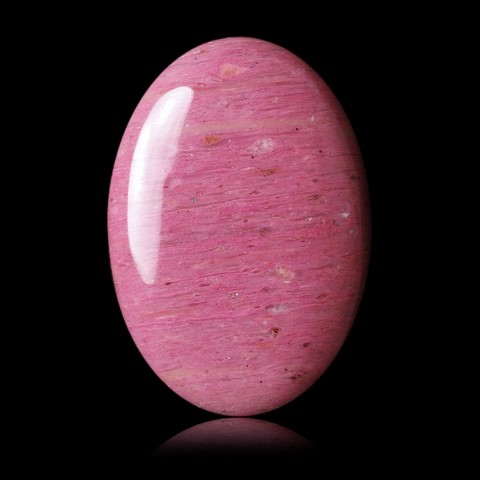 Rhodonite - Encyclopedia
Rhodonite - Encyclopedia
Class : Silicates
Subclass : Inosilicates
Crystal system : Triclinic
Chemistry : MnSiO3
Rarity : Common
Rhodonite belongs to the group of pyroxenoids, silicates whose structure is very similar to that of pyroxenes. It is both the most common of the pyroxenoids and manganese silicates. Its chemistry is quite variable : calcium, iron, magnesium and zinc can be used in its composition to give rise to varieties that are not widely used today, such as fowlerite. This mineral owes its name to its pink color (rhodon in Greek). It is found in manganese deposits formed by contact or regional metamorphism, and in hydrothermal veins. Very sensitive to surface alteration, rhodonite transforms into black oxides of manganese, giving pink masses veined with black according to fractures and cleavages, which can benefit from the status of ornamental stone. At high temperature, under the action of carbonate solutions, rhodonite turns into rhodochrosite. It is a mineral which has a vitreous luster, and a color usually pink, sometimes red-brown, red (gemmy crystals), more rarely brown. Its crystals are rare, usually stocky, sometimes tabular and elongated according to [001], with an almost square to rectangular section, generally with rounded edges and rough faces. Rhodonite is much more common in cleavable masses. Besides being used as an ornamental stone valued in jewelry and the sculpture of works of art, it is also sometimes an accessory ore of manganese.
Rhodonite in the World
Rhodonite in France
Twinning
Rhodonite exhibits lamellar twinning with {010} as a composition plane.
Fakes and scams
No known fakes for this mineral.
Hardness : 5,5 to 6,5
Density : 3,6
Fracture : Irregular to conchoidal
Trace : White
TP : Translucent to transparent
IR : 1.711 to 1.751
Birefringence : 0.013
Optical character : Biaxial +
Pleochroism : Weak
Fluorescence : Red
Solubility : Hydrochloric acid
Magnetism : None
Radioactivity : None





